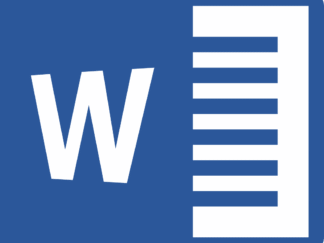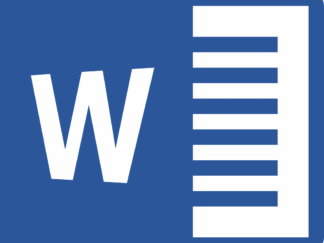Only logged in customers who have purchased this product may leave a review.

IT 662 Software Design
IoT based mobile Application CTU 05/08/2019 Introduction 1.1 Organization Description The organization is a large-scale software development firm that develops web and mobile applications for its clients. The major clients of the organization are the small and medium scale business enterprises in the business domains as healthcare, finance, and commercial. The organization was established in the year 2009 and is engaged in software development projects since its inception. The headquarters of the organization are in Sydney, Australia. The organization has always believed that innovation is the key to business and commercial success. Technology is enhancing itself, and the organization makes sure that it reflects the latest technology in all the software development and other business operations that it performs. There are the latest development and management techniques that are adopted by the company to provide its customers with the expected set of services and products. 1.2 Project Description The project that is being carried out by the company is the development of an IoT-based healthcare application for one of its medium-scale healthcare organization. The project will be developed using the Internet of Things (IoT) as the primary technology. IoT is one of the emerging technologies that refer to the interconnection of a varied set of components to achieve a common goal (Lingam, 2017). The components that will be involved and integrated into the application will be healthcare equipment, such as heart rate monitor, glucometer, etc., computer systems, database, database server, web server, Smartphones, network peripherals, sensors, data analytics tools, and Big Data tools (Harsh, 2017). The software development project will include the development of the IoT-based healthcare application along with a front-end for the application which will act as the interface for the users. The web interface will be accessible from the mobile as well as desktop platforms. The primary users for the application will be the patients, medical professionals, nursing staff, and healthcare organization’s management. The other users may include the administrative staff, healthcare authorities, and the family members of the patient. The project will be developed as per the business requirements & specifications handed over by the client. Some of the high-priority requirements include the management of the healthcare data sets by including the security and privacy of the information along with the automated analytics of the patient data to speed up and enhance the accuracy of medical diagnosis (Dziak, Jachimczyk & Kulesza, 2017). 1.3 Company Size & Information The company has its headquarters in Sydney, Australia and it is set-up in three further locations in Australia such as Melbourne, Brisbane, and Canberra. There are currently 325 employees engaged with the organization. About 40% of these resources are associated with the Sydney office, and the rest 60% is spread across the other three offices. There are over 180 dedicated software development professionals deployed with the organization, and these resources have varied development skills. For instance, there is a wide range of programming languages and the software developers associated with the organization have expertise on the languages such as PHP, Python, C#, C++, Java, Ruby, etc. The other employees deployed in the organization include managers, data scientists, web designers, UI Experts, business analysts, human resource management staff, and support staff. The company has completed over 1,676 projects since its inception and has succeeded in developing a distinguished name in the market. This is because the organization always makes sure that it provides its clients with the latest software packages that are in accordance with trends and patterns in the market. The management unit that is associated with the organization also adopts varied managerial and leadership styles to carry out the project successfully. The project management methodologies that are applied by the organization include Project Management Body of Knowledge (PMBoK), an agile methodology for Project Management, Projects In Controlled Environment (PRINCE2), and Lean Project Management (Serrador & Pinto, 2015). The company has always achieved a rating of 4+ on a scale of 5 from its customers. Impact of the Problem on the Organization The client of the project of IoT-based healthcare application development project is a medium-scale healthcare firm. The healthcare firm is facing numerous challenges with its data management and handling processes. The number of patients is increasing on a per day basis, and there is a lot of information that is associated with every patient. Some of these information sets include demographic details of the patient, medical details of the patients, medical history, medical professional details, payment details, etc. Also, there is a record of every medical professional that is required to be stored and managed in the database. This leads to the presence of a huge cluster of information that includes a wide range of data. These data sets have varied data structures, and the volume of these sets also varies. It is, therefore, becoming difficult for the organization to manage all of these data sets. Also, patient engagement and satisfaction levels are deteriorating as a result. There is a lot of time that is spent in data searching and retrieving. There have also been occurrences wherein the medical reports of the patients have been duplicated or deleted from the records. The traditional tools and methods for data management are no longer sufficient to manage the data requirements of the organization. Another problem that the organization faces is data security and privacy. There are data security and privacy risks that are now associated with organizational data. The occurrence of these risks, such as data loss, data leakage, malware attacks, denial of service attacks, etc. have legal and organizational issues for the company (Deursen, Buchanan & Duff, 2013). Also, the repeated occurrence of security and privacy issues has resulted in the reduction of the market shares and customer base. The overall revenues and sales of the organization have also come down. It has become essential for the organization to automate the business processes and manage its data adequately. 1.4 Intended Research Process It is intended to conduct research using a mix of qualitative and quantitative research methods. The exploration of the issues will be done under the qualitative methods, and the analysis will be made as per the data sets gathered. The data techniques that are intended to be used and applied under this method would be interviews, observations, surveys, domain analysis, and group discussions. There will be interview sessions planned with the target audience of the mobile application, and the response will then be analyzed to understand the nature of issues and the associated impacts. Similarly, group discussions will be done. The observation of the existing system will be done to understand the process flow and to get an idea of the issues and problems associated with the same. The surveys and questionnaires will be prepared as per the user type, and the response will be collected to determine the functional and non-functional requirements (Jervise & Drake, 2014). The quantitative research methods will make use of the mathematical and statistical approaches to determine the issues and the associated impacts. Co-relational and experimental research processes are intended to be applied under the quantitative set of methods. The sample size in all of these processes will be kept small to moderate. The data sets that will be gathered as per both the research methods and categories will then be analyzed using the automated data analytics tools. The associated patterns and trends will be identified to get the details of issues that will be involved. The impact assessment will then be carried out for all the issues that will be listed. This will provide detailed identification of the issues, type of the issue, nature of the impact, degree of the impact, and associated details. Feasibility Analysis The system designer and developers associated with the project needs to access the feasibility of the general requirements that are formulated by the project stakeholder and approved by the project managers. In addition to this, they should also consider existing possible solutions. The large scale software development company deals with design and development of the website and mobile applications for different organizations such as healthcare, finance commercial, etc. This specific project deals with the design and development of an IOT based healthcare application for an SME healthcare center. The feasibility of the project is measured in the below section: Table 1: Feasibility Study The components and modules used to design the system include hardware, software, cloud vendor (Amazon EC2), WIFI module, Temperature sensor, Pulse Oximeter, etc. The costs for each of these components are individually updated to define whether the project will be feasible or not. Apart from this, the training and development cost for the project is also determined, and from the integrated resultant, it is defined that the project is feasible for the owners. Project plan and risk analysis 3.1 Project plan This particular section of the report focuses on the details of project planning. The software design document includes different components and activities and based on the skills, approach and knowledge of the project team members the activities are individually assigned to separate resources. As soon as the tasks or activities are assigned it becomes their responsibilities to accomplish assigned roles within estimated time maintaining all project requirements. After estimating and analyzing the IOT based healthcare application project details, it is determined that the total time and cost needed, or the projects are respectively 14 months and $900,000. The methods and estimation techniques that are employed to conduct the project are also elaborated in the below section. 3.2 Methods applied to conduct the project There are different methods used by the project managers and project team members to deploy a cloud-based project for the client companies. Agile, scrum, waterfall, Adaptive project framework, and PERT are the most widely used methodologies that help to estimate the project including identification of tasks, duration, resource identification, etc. However, Agile project management method is the most



Reviews
There are no reviews yet.